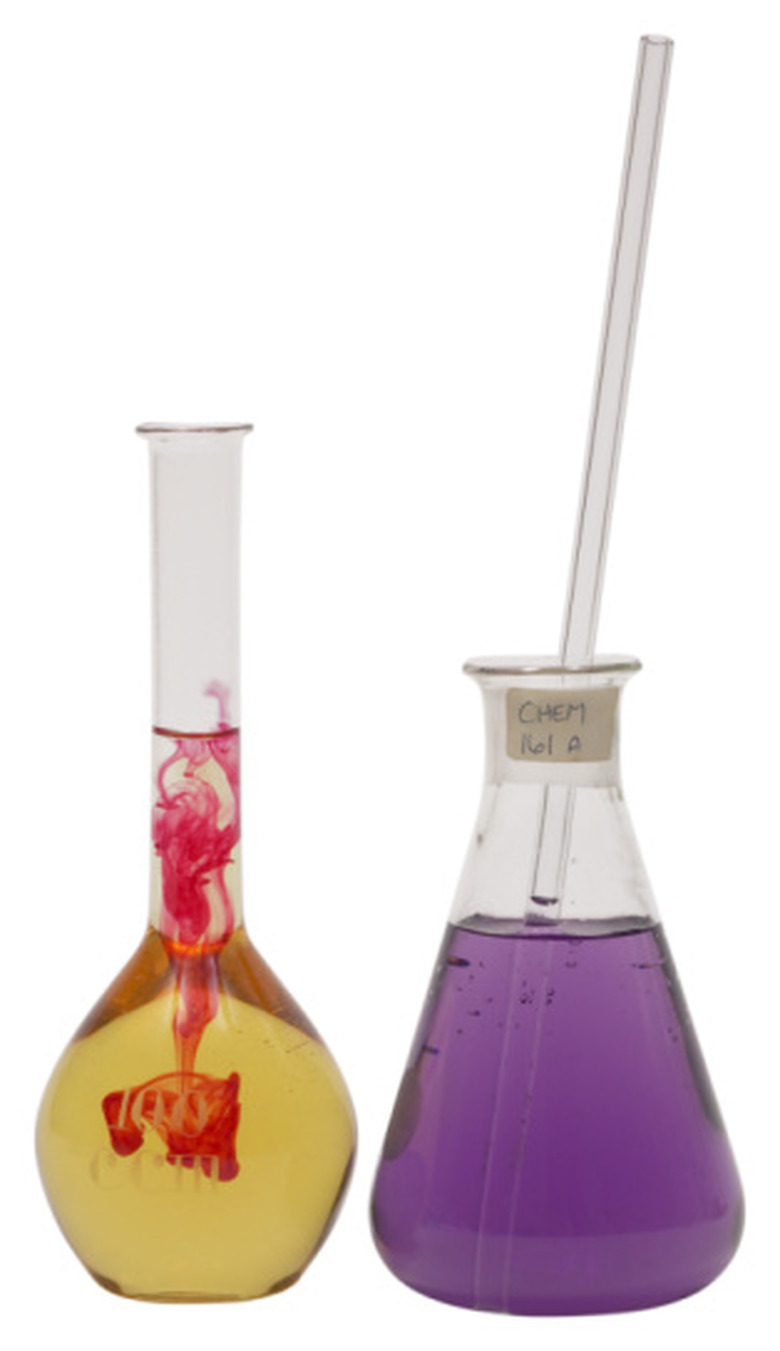How To Convert From Molarity To Molality
Chemists have a variety of means at their disposal to communicate the concentration of chemicals in solution. One common method of describing concentration is to give the moles chemical per liter solution, or the molarity. A mole is a term which stands for 6.02 x 10^23 atoms or molecules of chemical. Another less common unit of concentration is molality. Molaility is the moles chemical per kilogram of solvent used in making the solution. You can convert from molarity to molality if you know the density of the solution.
Step 1
Determine the moles of chemical contained in 1 liter (L) of the solution. Since molarity is the moles chemical per liter, this value will simply equal the molarity of the solution. For example, if you have a solution of potassium chloride (KCl) in water which is 2.50 molar, there are 2.50 moles KCl in 1 liter.
Step 2
Multiply the moles of chemical by the gram molecular weight of the chemical. The molecular weight is the mass, in grams (g), of 1 mole of a compound. You can obtain the molecular weight for a chemical from the manufacturer's information, such as the Material Safety Data Sheet (MSDS). This calculation provides you with the grams of chemical in 1 liter of solution. In the above example, you would multiply 2.50 moles by 74.55 g/mole (the molecular weight of KCl) to obtain 186.4 g KCl.
Step 3
Multiply the density of the solution (in units of grams per milliliter, or g/mL) by 1,000 mL (the quantity of milliliters in the 1 liter of solution volume). The result is the mass of the 1 liter of solution, in grams. For the example, if the density of the KCl solution was 1.05 g/mL, you would calculate 1.05 g/mL times 1,000 mL for a result of 1050 g solution.
Step 4
Subtract the weight of the chemical in 1 liter from the total weight of the 1 liter solution. The result is the mass of solvent in 1 liter of solution. The mass of solvent in 1 liter of the example solution would be 1050 g – 186.4 g = 863.6 g.
Step 5
Divide the mass of solvent by 1,000 to change it into units of kilograms. Using the above example, you would divide 863.6 g by 1,000 to get 0.8636 kg solvent.
Step 6
Divide the original moles of chemical in 1 liter of solution by the mass of solution in kg. The result is the molality of the solution, or the moles chemical per 1 kilogram solvent. In this example, the solution concentration is 2.50 moles KCl divided by 0.8636 kg solvent, which is a molality of 2.89.
Things Needed
- Calculator
- Solution density
TL;DR (Too Long; Didn't Read)
When writing the concentration of a solution, make sure that you distinguish between capital M and lower case m, since one means molarity and the other means molality.
Cite This Article
MLA
Judge, Michael. "How To Convert From Molarity To Molality" sciencing.com, https://www.sciencing.com/convert-molarity-molality-8660659/. 24 April 2017.
APA
Judge, Michael. (2017, April 24). How To Convert From Molarity To Molality. sciencing.com. Retrieved from https://www.sciencing.com/convert-molarity-molality-8660659/
Chicago
Judge, Michael. How To Convert From Molarity To Molality last modified August 30, 2022. https://www.sciencing.com/convert-molarity-molality-8660659/
